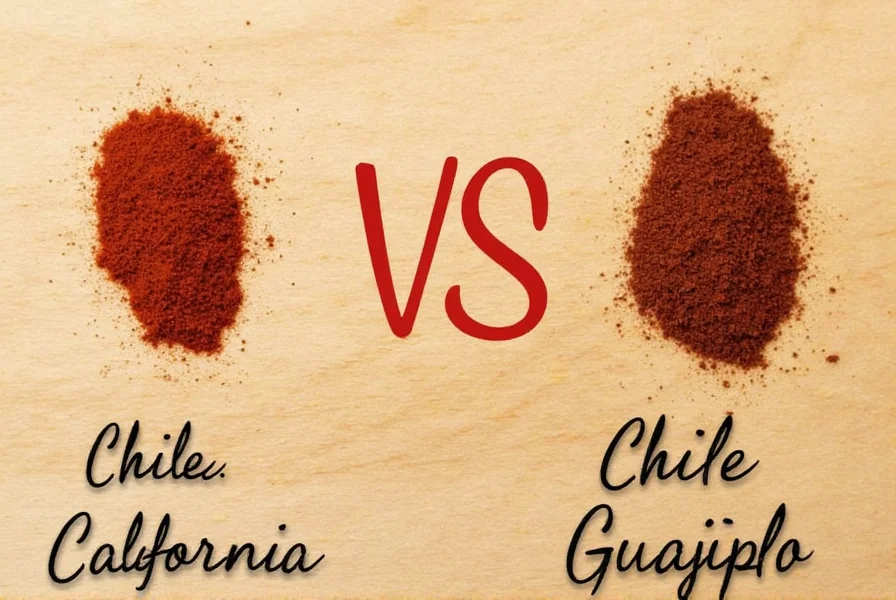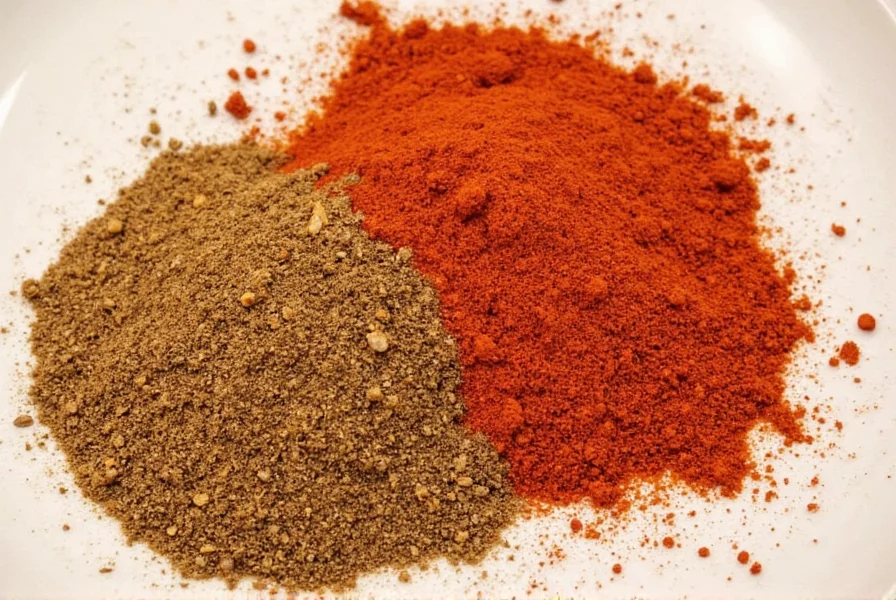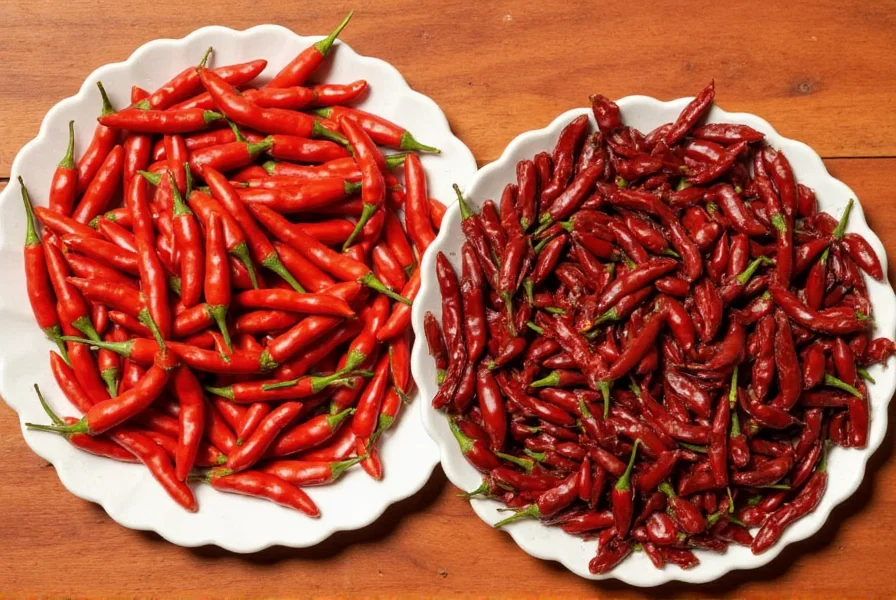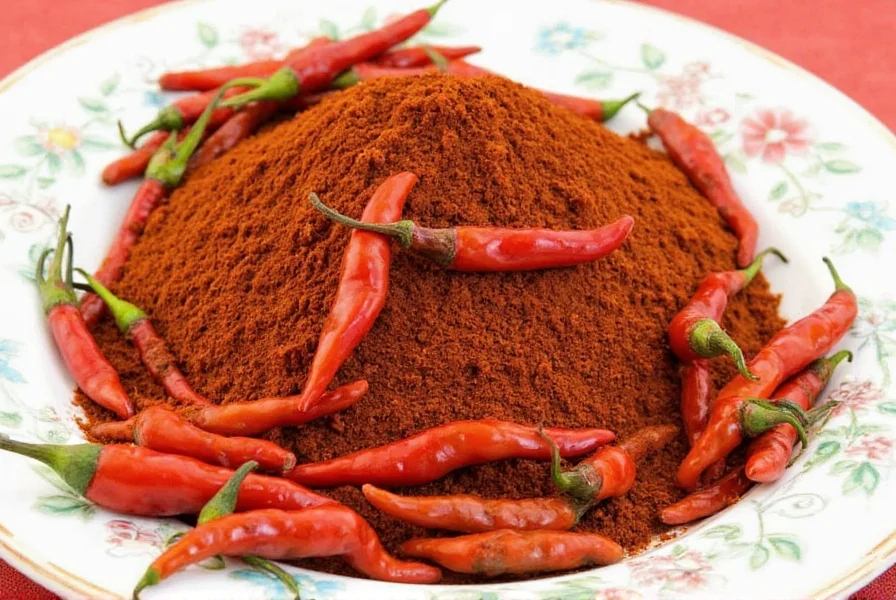Table of Contents
- Introduction
- Chile California Profile
- Chile Guajillo Profile
- Head-to-Head Comparison Table
- Cooking Tips & Recipe Ideas
- Buying Guide: Picking the Right Chile for You
- Frequently Asked Questions
- Conclusion
Introduction
Chile California and Guajillo are two popular dried chiles with distinct heat levels and flavor profiles. Chile California has mild heat (500-2,500 SHU) with earthy and smoky notes, while Guajillo has moderate heat (2,500-5,000 SHU) with berry, tea, and pine flavors. This guide explains their differences and how to choose the right one for your recipes.
Chile California Profile
The Chile California, also known as California chili pepper or Anaheim pepper when dried, is a mild chile with a smooth, shiny skin and vibrant red color. It is commonly used in Mexican-American cuisine for its balanced flavor without excessive heat.
Flavor Profile:
- Mild heat (500–2,500 SHU)
- Earthy and smoky notes
- Subtle sweetness
Common Uses:
- Perfect for salsas, enchilada sauces, and mild chili
- Ideal for stuffing or rehydrating in soups and stews
- Great for everyday cooking where gentle heat is desired

Chile Guajillo Profile
The Chile Guajillo is one of Mexico's most widely used dried chiles. With its elongated shape, reddish-brown color, and thin skin, it offers a complex flavor profile that balances sweetness and spice.
Flavor Profile:
- Moderate heat (2,500–5,000 SHU)
- Berry, tea leaves, and pine notes
- Subtle sweetness with mild spiciness
Common Uses:
- Essential for adobo sauces, moles, and marinades
- Perfect for flavoring meats like pork and chicken
- Excellent for creating rich, complex sauces

Head-to-Head Comparison Table
| Feature | Chile California | Chile Guajillo |
|---|---|---|
| Heat Level (SHU) | 500–2,500 | 2,500–5,000 |
| Color | Vibrant red | Reddish-brown |
| Texture | Smooth and shiny | Dry and papery |
| Flavor Notes | Earthy, smoky, subtle sweetness | Berry, tea, pine, sweet |
| Best For | Salsas, mild sauces, everyday cooking | Adobos, moles, meat marinades |

Cooking Tips & Recipe Ideas
Now that you know what makes these chiles special, let's talk about how to use them effectively in your kitchen. Here are some practical tips to bring out their best flavors:
Preparation Basics:
- Rinse before use – Gently rinse under warm water to remove any dust or debris.
- Toasting – Dry toast in a pan for 10–15 seconds per side to enhance aroma and deepen flavor.
- Rehydration – Soak in hot water or broth for 20–30 minutes until soft.
Recipe Pairings:
- Chile California: Try using it in a quick red enchilada sauce or blend it with tomatoes and garlic for a vibrant salsa.
- Chile Guajillo: Make a traditional adobo de puerco or mix with vinegar and spices for a smoky marinade.
Buying Guide: Picking the Right Chile for You
Choosing between Chile California and Guajillo depends on your dish and desired flavor profile. Here's what to look for:
What to Look For:
- Color: Bright, uniform coloring indicates freshness.
- Texture: The chile should be pliable but not brittle.
- Smell: Fresh, aromatic—avoid musty or overly dry chiles.
Recommended Brands:
- Goya Foods Dried Chiles: Reliable quality, easy to find, and great for everyday use.
- La Costeña Dried Peppers: Known for authentic flavor, perfect for traditional Mexican dishes.
- El Mexicano Brand Whole Dried Chiles: Offers a good balance of heat and flavor, ideal for experimenting with new recipes.
When to Choose Chile California:
- You want a gentle heat with earthy undertones
- Preparing salsas, enchiladas, or mild stews
- Prefer a smooth texture after rehydration
When to Choose Chile Guajillo:
- You prefer a sweet-spicy complexity for sauces
- Need a base for complex dishes like mole
- Cooking for guests who may not handle high heat well

Frequently Asked Questions
What's the main difference between Chile California and Chile Guajillo?
The primary difference lies in their heat levels and flavor profiles. Chile California has mild heat (500-2,500 SHU) with earthy and smoky notes, while Chile Guajillo has moderate heat (2,500-5,000 SHU) with berry, tea, and pine notes. Chile California has a smooth, shiny texture while Guajillo is more papery and brittle.
Can I substitute Chile California for Chile Guajillo in recipes?
Yes, but with caution. Since Chile California is milder, you can use it as a direct substitute for Guajillo in most recipes. For every 1 Guajillo chile, use about the same amount of Chile California. If you need more heat, add a pinch of cayenne pepper or use a small amount of a hotter chile like Ancho.
How should I store dried chiles to maintain freshness?
Store dried chiles in airtight containers in a cool, dark place. For extended shelf life (up to 1 year), keep them in the refrigerator or freezer. Properly stored chiles will maintain their vibrant color and flavor. Check periodically for any signs of moisture or mold, which indicate they should be discarded.
Do I need to remove seeds from these dried chiles before using them?
For Chile California, removing seeds is optional since it's already mild, but it helps control heat. With Chile Guajillo, seeds can often be left in as the chile is naturally moderate in heat, though some traditional recipes call for their removal for texture reasons. When making sauces, many chefs strain the seeds out after rehydrating regardless of the chile type.
Why do some recipes call for toasting dried chiles before use?
Toasting dried chiles in a dry skillet for 10-15 seconds per side releases their essential oils and enhances their natural flavors. This process creates a deeper, more complex taste profile and slightly reduces bitterness. Be careful not to burn them, as this will create a bitter taste. After toasting, they're typically rehydrated before being blended into sauces or pastes.
Are Chile California and California chiles the same thing?
Yes, Chile California is the dried form of the California chili pepper (also known as Anaheim pepper). It has mild heat (500-2,500 SHU) and is commonly used in Mexican-American cuisine. It is not related to Serrano peppers, which are a different variety with much higher heat.
Conclusion
Whether you're team Chile California or Chile Guajillo, both offer incredible depth of flavor that can elevate your meals. Chile California brings gentle heat with earthy notes, while Chile Guajillo offers a sweet-spicy complexity perfect for rich sauces. Understanding their differences helps you choose the right one for your next recipe.
Next time you're selecting dried chiles, remember: Chile California for mild, everyday dishes, and Guajillo for complex, flavorful sauces. Either way, you're adding authentic Mexican-inspired magic to your plate!

Ready to spice up your kitchen? Grab a bag of both chiles and start experimenting today!










 浙公网安备
33010002000092号
浙公网安备
33010002000092号 浙B2-20120091-4
浙B2-20120091-4